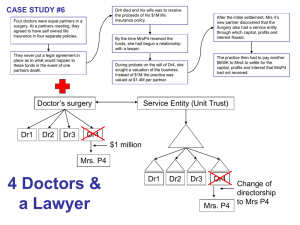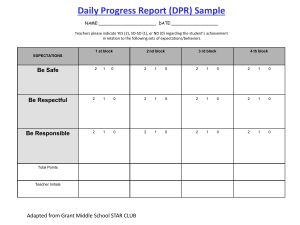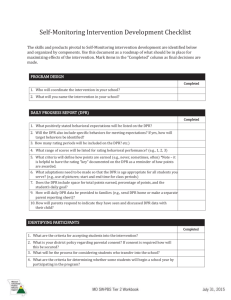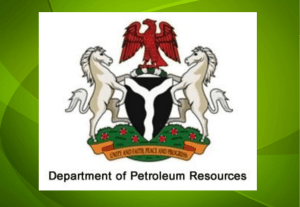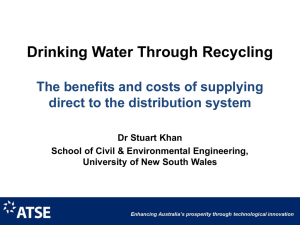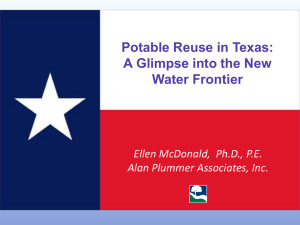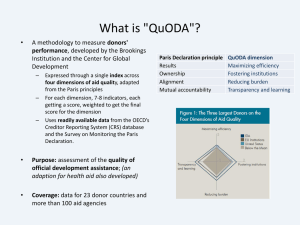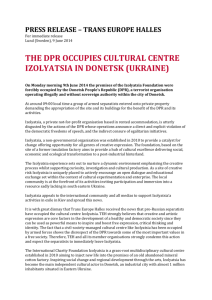Hemang KareliaPresentation
advertisement
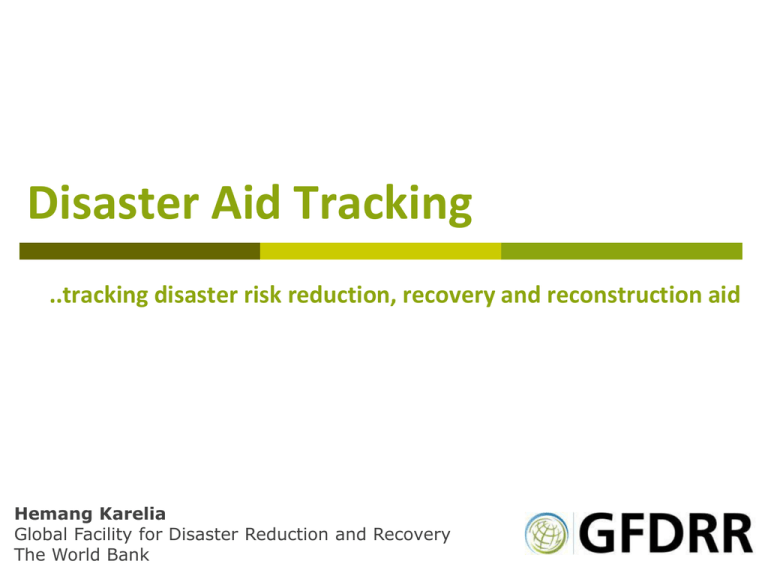
Disaster Aid Tracking ..tracking disaster risk reduction, recovery and reconstruction aid Hemang Karelia Global Facility for Disaster Reduction and Recovery The World Bank Presentation outline 0. 1. 2. 3. 4. 5. Introduction Why do we need it? How are we doing it! Where have we reached… What is so special about it? …where do we want to go. 0 GFDRR – A global partnership 1 Why do we need it? The Old Reality of Aid The New Reality of Aid Source: Authors’ illustration (Fengler and Kharas 2010), Summary from the publication ‘Delivering Aid Differently – Lessons from the Field’ (Fengler and Kharas 2010) 1 For turning aid information into impact.. In the face of Disaster Risk Management: How can donors, recipients and NGOs better coordinate their efforts? How can governments better plan their budgets and optimize external and domestic resources for Disaster Risk Reduction, Recovery and Reconstruction (DR4)? How can citizens provide feedback on aid projects? How can the trends and lessons learnt from past interventions help us doing better job in on-going and future efforts? 1 ..by improving DR4 aid information Increase the value of DR4 aid information Align all activities with global standards, such as HFA priorities for DRR, IATI standards for Aid Transparency and most importantly, OECD CRS classification codes for global inter-operability Improve descriptions of aid activities Maintain or improve data quality Make aid information accessible to all Increase the Coverage on DR4 Activities Publish non-traditional donors Include flows not classified as Official Development Assistance (ODA) Expand into private and foundation aid 2 How Are We Doing it – AidData Model Direct work with Donors Brazil, India, Czech Republic.. Collecting From Public Sources World Bank, Kuwait, China.. Re-Published from Aggregators OECD Creditor Reporting System (CRS) Data Quality Process DR4 Disaster Aid Tracking 3 Where have we reached… Double coded all projects in the sectors with potential having DR4 projects Adapted AidData arbitration system to process records according to the DR4 activities coding scheme Finalized the technical implementation of the Disaster Aid Tracking portal and dashboard Conducted a series of informal interviews with data specialists and experts to gather feedback Beta version at gfdrr.aiddata.org 4 What’s so special about it? Isolated and classified all DR4 projects in-line with HFA* priorities for action Open source and collaborative technology Rich data visualization tools (dashboard) for effective reporting and decision making Application Programming Interface (API) Fully compatible with OECD CRS * Hyogo Framework of Action for Disaster Risk Reduction 5 Where do we want to go Geocoding all DR4 related projects Allow crowd-sourcing in aid information management and reporting Community-based Monitoring and Evaluation Mobile Applications Allow posting of a project specific updates, reports and knowledge products 5 Aid Data and the Crowd Need for On-the-ground Aid Information Lack of information about outcomes No reliable mechanism to give recipients a voice in aid Little coordination on the ground Opening AidData to Make DR4 Aid Better Empower recipients and civil society to give feedback on DR4 projects Improve quality of aid information Increase transparency in the aid management process Enhance accountability in disaster related interventions 5 Next steps To get the DAT methodology peer-reviewed and endorsed in close collaboration with ISDR system, OECD, IASC, DAC donors and think-tanks/experts. This will essentially involve: Freezing the definitions and classification criteria for disaster related terms Establishing a protocol for quantifying DR4 related aid component in projects Implementation To extend the system in phased manner for national DRR platforms/aid coordinating agencies www.gfdrr.aiddata.org Hemang Karelia hkarelia@worldbank.org
